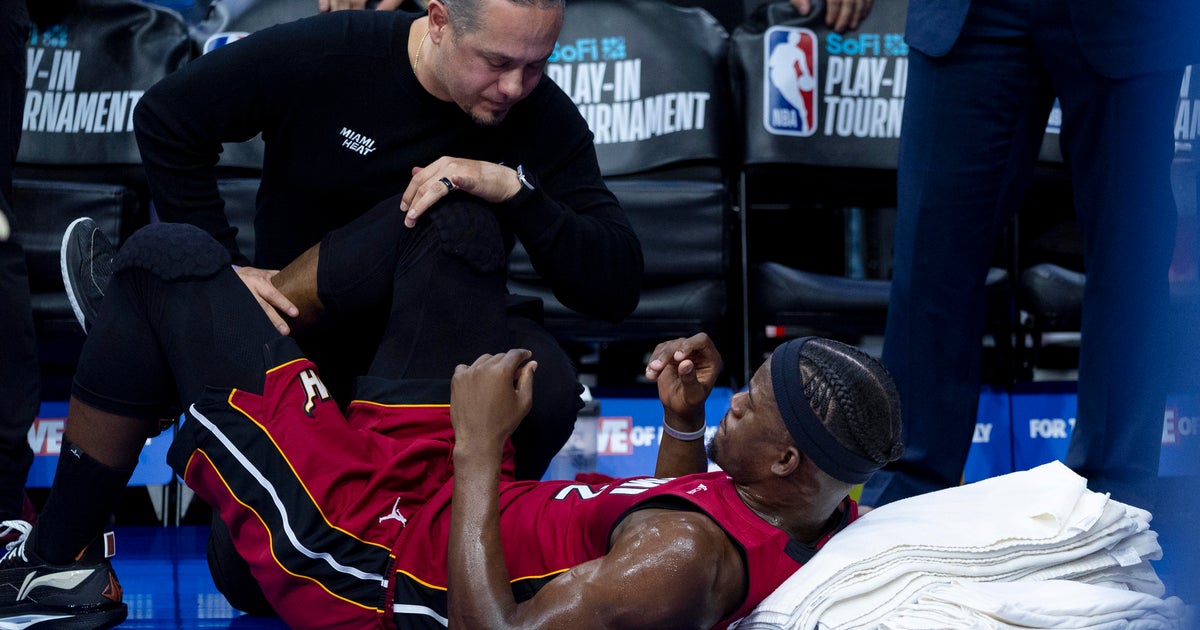Marlins' Yelich Could Benefit From Getting Off The Ground
Follow CBSMIAMI.COM: Facebook | Twitter
MIAMI (CBSMiami/AP) – Just showing up doesn't cut it anymore.
Being a big league hitter these days can require some serious lifting.
No, not in the weight room. The lift some players are concerned about now? It's getting the baseball in the air.
Jose Bautista, Josh Donaldson and Justin Turner have made millions after revamping their swings to hit more fly balls.
Last year, Daniel Murphy, Jonathan Lucroy and Nicholas Castellanos had breakout seasons while significantly cutting their ground ball rates.
Already this year, journeyman minor leaguer Jose Martinez has credited that adjustment after making the St. Louis Cardinals' opening day roster.
It raises the question: are there other major leaguers who could benefit from a little extra loft in their swings?
It's not an easy adjustment to make, and for players who are already successful pros, it may not be worth the risk.
But fortune can favor the bold, and the difference between a good hitter and a great one can be a slim margin — perhaps a matter of a few degrees of launch angle.
With the help of numbers from MLB's Statcast, here are some players who might benefit from a little more upper cut.
___
Christian Yelich, Miami Marlins
Yelich is already a top young outfielder, and last year he hit more balls in the air than ever before. In 2015, Yelich led all qualified major leaguers by hitting 62.5 percent of his batted balls on the ground. Last year, he shaved that number to 56.5. The result? He tripled his home run output to a career-best 21. Despite that, Yelich is still an extreme ground ball hitter — of 373 players with 100 batted balls last season, Yelich ranked 368th with a 2.6 degree average launch angle. On the flip side, he was 15th with an average exit velocity of 93.3 mph. Few hit balls harder than Miami's 25-year-old budding star. If he can just hit them a little higher, he may get out from under the radar.
___
Eric Hosmer, Kansas City Royals
Even in a disappointing 2016 season, Hosmer ranked among the game's leaders with an average exit velocity of 93.4 mph. The problem? Too many of those hot shots found infielder's gloves. Hosmer's ground ball rate spiked to a career-high 58.9 percent, which resulted in big drops in batting average, on-base percentage and slugging percentage. Hosmer has the raw strength to be a big-time slugger, but he's only topped 20 homers once in his career. The 27-year-old can be a free agent after the 2018 season, and a power spike could lead to a bigger payday if he hits the open market.
___
Carlos Correa, Houston Astros
Correa may be another case where if it isn't broke, don't fix it. He hit .274 with 20 home runs last season, and at 22, he's already one of baseball's best shortstops. Like Yelich, though, there could be frightening room for improvement. Correa averaged a 91.8 mph exit velocity last season, but at a launch angle of just 6.5 degrees. That velocity puts him in the same range as sluggers like Chris Davis and J.D. Martinez, and it's not hard to imagine Correa hitting 30 to 40 home runs a season with a little more lift.
___
David Freese, Pittsburgh Pirates
Freese won World Series MVP in 2011 after hitting a game-ending homer in the 11th inning of Game 6 for the Cardinals, but the long ball has never been a huge part of his game. He has the strength to do more damage, evidenced by a 91.5 mph exit velocity in 2016, but he also nearly led the majors with a 61 percent ground ball rate. Freese has said he sees the benefit of hitting the ball in the air, but the 33-year-old has also expressed reluctance to change his swing dramatically at this stage of his career. With Jung Ho Kang's status uncertain following a DUI conviction in his native South Korea, Freese should see expanded playing time this season, so the opportunity is there for a breakout if Freese can get under a few more balls.
___
Ian Desmond, Colorado Rockies
As a shortstop with Washington, Desmond won three Silver Slugger awards by topping 20 homers on an annual basis. He's since slid down the defensive spectrum, signing a $70 million, five-year deal with Colorado this offseason to play first base. He's going to miss several weeks of the season after breaking his left hand in spring training, but when he returns, he's a prime candidate for a power spike. He averaged 91.5 mph on batted balls last season, but he hit 53.4 percent of those on the ground. The thin air at Coors Field doesn't make much difference when the ball is rolling, but if Desmond can add a little loft, he could make good on his new role and salary with the Rockies.
___
DJ LeMahieu, Colorado Rockies
The 28-year-old second baseman was a breakout performer in 2016, winning the NL batting title with a .348 average. LeMahieu rarely strikes out and tends to hit the ball hard, averaging 92.5 mph on batted balls last season — just ahead of Albert Pujols and Paul Goldschmidt. The difference is those homer-hitting first baseman averaged over 12 degrees on their launch angles, while LeMahieu ended up at 6.3. LeMahieu has already become a very pleasant surprise for the Rockies, but the numbers hint there could be even more there for this middle infielder.
(© Copyright 2017 CBS Broadcasting Inc. All Rights Reserved. The Associated Press contributed to this report.)



